Previously, Huinong.com had a brief introduction to several common pests and diseases of cucumbers. It is important to know that cucumbers are a common type of vegetables, whether it is facility cultivation or open field cultivation. In the cultivation process, we will also encounter many pest and disease problems. The following series of Huinong.com introduces 25 major pests and diseases of cucumber.
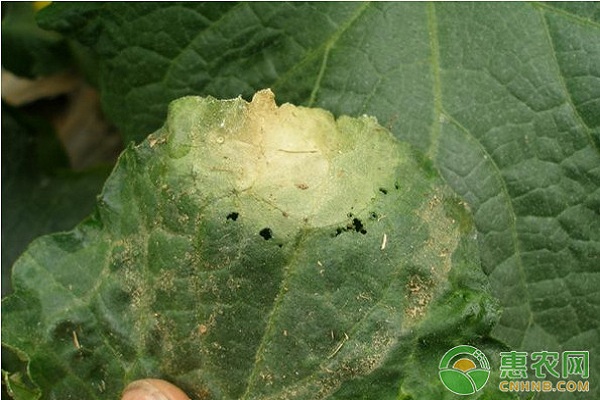
Cucumber disease
Cucumber downy mildew
Seedling stage, adult stage can occur, mainly harming leaves.
Symptoms:
After the leaves are damaged, water-stained spots appear at the beginning, and the lesions gradually enlarge, showing a polygonal pale brown plaque. When the humidity is high, the gray-black mold layer grows on the back or leaves of the leaves.
In the later stages, the lesions are ruptured or contiguous.
Control agents:
Downy mild acid hydrochloride + cyanosin, furoyl, manganese zinc, manganese zinc, enoyl, azoxystrobin, nail cream, creamer, fine nail cream, manganese zinc, etc.
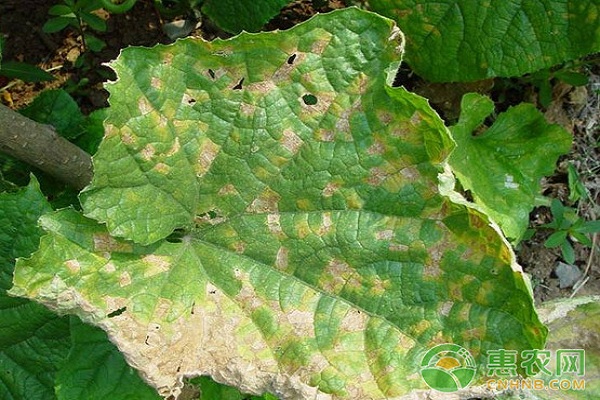
2. Cucumber bacterial angular leaf spot
Mainly harmful to the leaves, can also infect stems, petioles, tendrils, fruits and so on.
Symptoms:
The leaves are damaged. First, there are small spots with water immersion. After the lesions are enlarged, they are polygonal due to the restriction of veins, yellow-brown, with oily light.
There is no black mold layer on the back of the leaf, and milky white pus can be seen when the humidity is high.
In the later stage, the lesions are grayish white, and the central tissue is dry and detached to form perforations.
The lesions on the stem and petiole are water-stained at the beginning, nearly round, and then pale gray. The severe longitudinal cracking is watery and rot, and has an odor.
Control agents:
In the early stage of the disease, hydratedmycin, neutrophin, leaf azole, thiazole zinc + copper rosinate, thiabium copper, chlorobromoisocyanuric acid, and the like.
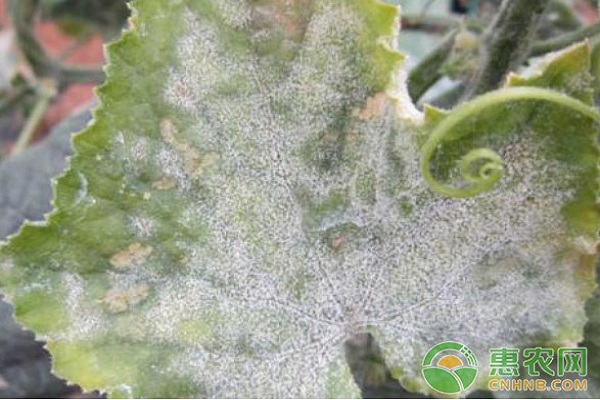
3. Cucumber powdery mildew
From the seedling stage to the harvest stage, the disease can be affected, the leaf is the most serious, the petiole and stem are the second, and the fruit is less affected.
Symptoms:
In the early stage of the disease, white near-round small pink spots were produced on both sides of the leaves, and there were many leaves.
After the expansion into the edge is not obvious, contiguous white powder, in severe cases, the whole leaf is covered with white powder, the later is gray, the diseased leaves are yellow, but generally do not fall.
The symptoms of petiole and stem are similar to those of leaves.
Chemical control:
In the early stage of the disease, azoxystrobin, ether oxystrobin, thiophanate-methyl, propidium zinc, chlorothalonil, myclobutanil, mancozeb and the like may be selected.
4. Cucumber powdery mildew
Symptoms:
Mainly harmful to the late growth stage of cucumber leaves.
Dark green to light brown lesions are produced on the leaves. When the humidity is high, the lesions are thin, the edges are water-soaked, and it is easy to rupture. The longer the duration of high-humidity, the longer the light-stained orange mold on the lesions, which rapidly expands, causing the leaves to rot or dry up.
The colonies were initially white and turned pink.
Control agents:
The initial onset of flusilazole, iprodione, azoxystrobin, methyl sulfide, mildew, prochloraz manganese salt + Daisenlian, bromobacillus + chlorothalonil and other agents.
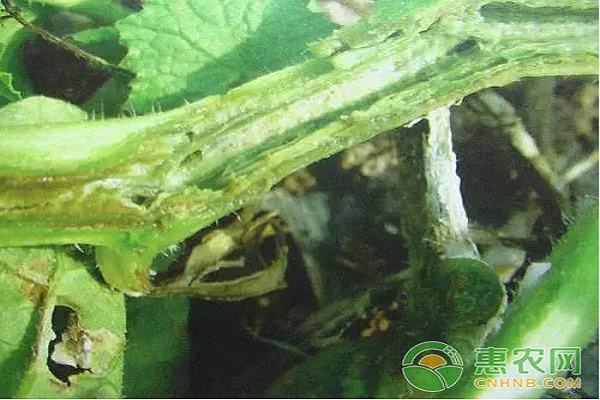
5. Cucumber blight
Cucumber blight is mainly harmful to stems and leaves.
Leaf incidence:
In the early stage, there were nearly round or irregular shape, light brown lesions, and some showed a "V" shape from the edge of the leaf inward. The lesions were easily broken in the later stage, the wheel pattern was not obvious, and the black spots were born.
Stem currence:
Mostly on the base or branch of the stem, there are oval to fusiform, slightly concave, oil-immersed lesions, sometimes overflowing amber resin gel. When the disease is serious, the stem section becomes black, rot, and easy to break.
Causes yellowing and necrosis of local leaves above the lesions, and the vascular bundles of the diseased plants do not change normally and the roots are normal.
Control agents:
Benzene, prochloraz, azoxystrobin, difenoconazole and other agents.
6. Cucumber wilt
Fusarium wilt can occur throughout the growing season, with the most incidence of flowering and melon.
Symptoms:
At the onset of seedling stage, the base of the stem becomes brown and contracted, and the stalk is broken.
When the seedlings are damaged early, they can cause rot before they are unearthed, or the cotyledons will appear dehydrated soon after emergence, and the wilting will sag (the squatting disease is stagnation after smashing).
Adult disease
The initial damaged plants showed some leaves or one side of the leaves of the plants. They sagged at noon and seemed to be dehydrated, but recovered sooner or later. After a few days, they could not recover and died.
The base of the main vine has a longitudinal split, tearing the stem of the stem, and the vascular bundle turns yellow-brown to dark brown and extends upward.
When wet, the stem of the stem has a longitudinal split of the stem, and there is often a resinous gel overflowing with a pink mold, and the disease becomes silky.
Control agents:
Spring erythromycin, amino oligosaccharide, nail cream, carbendazim, salicylamine, benomyl + thiram and other agents.
7. Cucumber disease
The disease can occur from the seedling stage to the adult stage, and the disease is most serious in the base of the stem and the young part.
Symptoms:
Seedlings are killed:
At first, it was dark green water-soaked soft rot, and the diseased part collapsed, and then dried up and wilted.
Adult disease:
Starting from the base of the stem near the ground, the water stain is dark green at first, the diseased part is softened and contracted, and the upper leaves are wilting and drooping, and the whole plant is dead.
Leaf incidence:
Initially round or irregular dark green water-immersed lesions, the edges are not obvious; when the humidity is high, the lesions spread rapidly, the diseased leaves rot rapidly; when dry, the lesions develop slowly, the edges are dark green, the middle Light brown, often dry and brittle.
Incidence of petiole and stem:
Initially in a water-soaked state, the posterior contracture causes the disease to die.
Fruit incidence:
First, it occurs from the flower buds, and there are lesions in the water-stained dark green near-circular depression. The back fruit shrinks and softens, and the surface is white with sparse mildew.
Control agents:
Primary onset of azoxystrobin, ether oxystrobin, cream urea, chlorothalonil, propyl sen. cream urea cyanide, etc.
When the disease is common, it can be selected from the group of chlorfenapyr hydrochloride, fluopyram, fluazinam, manganese zinc, flumorph, enoylmorpholine and chlorothalonil.
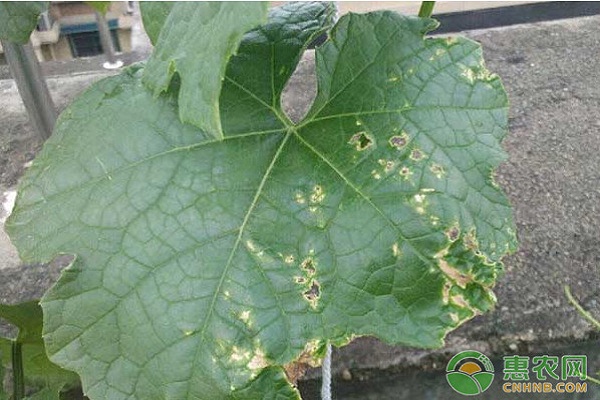
8. Cucumber anthracnose
Cucumber seedlings and adult plants can be harmed, mainly for damage to leaves, but can also damage petiole, stems and melons.
Characteristics of the disease:
Seedling incidence:
The edge of the cotyledon produces a semi-circular brown lesion with a black dot or a reddish viscous substance, and the base of the stem is light brown atrophy, causing the melon seedling to fold.
Adult disease:
At the beginning of the leaves, yellowish, water-stained, round lesions appear, and then turn yellow-brown, with yellow halos.
When dry, the lesions are cracked and perforated; when wet, the disease part secretes a pink sticky substance.
Melon sticks:
Produces a water-stained light green lesion, which turns into a round or nearly round lesion with a dark brown and a slight depression. The diseased fruit is bent and deformed at the later stage, cracking, and a pink sticky substance when wet.
Control agents:
Bromobacillus, myclobutanil + mancozeb, prochloraz + chlorothalonil, pyraclostrobin, phenyl ether, prochloraz, azole, dexamethasone and other agents.
9. Cucumber black spot
Symptoms:
The main damage to the leaves, the middle and lower leaves first onset, and then gradually expand upward.
The lesions are round or irregular, with yellow-white in the middle and yellow-green or yellow-brown edges.
In the later stage, the lesions are slightly uplifted, the surface is rough, the leaf spots on the back are water-stained, and the surrounding area is obvious, and there is a chlorotic halo. Most of the lesions appear between the veins and are rarely born on the veins. Quickly expand the link.
In the heavily ill field, several lesions are contiguous, the mesophyll tissue is dead, or the whole leaf is burnt, it looks like a fire, but does not fall off.
Control agents:
Azoxystrobin, difenoconazole, procymidone + daisenlian, propyl carbendazim, propidium zinc + iprodione and other agents.
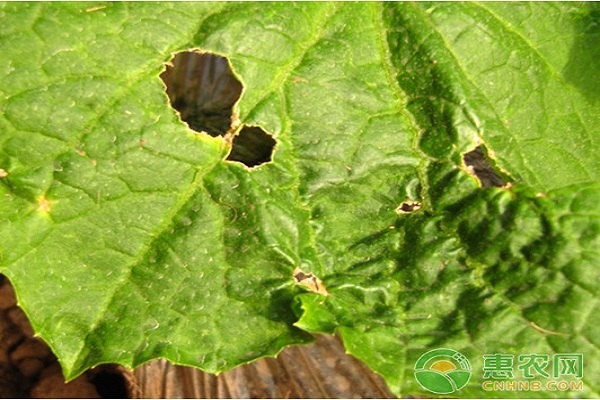
10. Cucumber Scab
Mainly harmful to young parts.
Symptoms:
Seedling disease
The true leaves are more sensitive than the cotyledons, and the yellow-white near-round spots on the cotyledons are produced, which leads to the dryness of the whole leaves.
Tender stem disease
It is a water-soaked dark green fusiform spot, which turns dark and has a cracked crack. When the humidity is high, it grows gray and black mold.
When the tendril is infected, it becomes brown and rot.
Growth point infection
It rots after 2 to 3 days.
Leaf infection
At the beginning, it was stained with green and nearly round spots. After perforation, the edges of the holes were not neat and slightly wrinkled, and had a yellow halo.
Melon strip
The primary fluid gradually expands into a dark green depression, and the surface grows gray-black mold layer. The pathogenic part is scab-like, and the diseased part stops growing, forming a deformed melon.
Control agents:
Fluorosilazole, azoxystrobin, chlorothalonil, nitrile bacteria, thiram and other agents.
11. Cucumber gray mold
Mainly harmful to young melons, leaves and stems.
The pathogens invade from the defeated female flowers, causing the petals to rot, and grow a light gray-brown mildew layer, which then spreads to the young melons, causing the umbilical part to be water-stained, and the young flowers are rapidly softened, atrophied, rotted, and the surface is densely moldy. Floor.
When the large melon is damaged, the tissue turns yellow and gray mold, and the mildew layer becomes pale gray, and the damaged part of the damaged melon stops growing, rots or falls off.
The leaves are infected with large lesions, which are nearly round or irregular, with obvious edges and a small amount of gray mold on the surface.
Control agents:
The initial onset of chlorfenapyr, procymidone + chlorothalonil, pyrimethanil, iprodione and the like.
12. Cucumber Sclerotinia
Mainly endangered petiole, leaves, growth points, fruits and stems.
Leaf disease
It produces irregular white to grayish white lesions. The heart of the growth point is water-stained, and it is easy to wet and rot when the humidity is high.
Fruit infection
Most of the residual flower parts are first watery and rot, and white hyphae grow. When the damage is serious, the plants wither and die.
It is initially water-soaked and quickly soft-rotated. After growing a large number of white hyphae, the hyphae densely form the black rat fecal sclerotia.
Stem disease
At the beginning of the stem near the ground or the branches of the main side branches, the fading water-immersed plaques are formed, and then gradually enlarged to a light brown color. Under high-humidity conditions, the diseased stems are soft and rot, and white cotton hairy hyphae grow. The stem of the diseased stem is destroyed and rotted, or the longitudinal crack is dry.
Control agents:
The initial onset of procymidone + trichloroisocyanuric acid, sclerotium net, methyl sulfide, frost Wei + mancozeb, methyl chlorhexidine + salicylamine, etc.
13. Cucumber spot disease
Characteristics of the disease:
Mainly harmful to the leaves.
It is easy to develop in the middle and late growth stages. The spot is spotted with water stains, and then becomes pale brown. The middle color is lighter and gradually dry, and there is a water-stained pale green halo around it.
The middle part of the lesion is thin paper, yellowish or grayish white, and is easily broken.
Control agents:
In the early stage of the disease, I choose imipenem manganese salt + chlorothalonil, azoxystrobin, chlorothalonil, iprodione, difenoconazole + chlorothalonil, different bacteria, carbendazim, propiconazole and other agents.
14. Cucumber bacterial edge blight
Leaves, petioles, stems, tendrils, and fruits can all be affected.
Symptoms:
At the beginning, a small spot of water-immersed spots is formed in the leaves, and then expanded into a pale brown irregular spot with a halo around;
Severely produced large water-immersed lesions, extending from the leaf margin to the middle of the leaf, forming a wedge shape;
Petiole, stem, and tendril have water-stained spots and brown.
When the fruit is infected, it forms a water-immersed lesion on the stalk, then becomes brown, and the fruit is yellow and wilting.
When the humidity is high, the disease part overflows the pus.
Control agents:
Thiobacillus copper, quinavirin copper, copper rosinate, chunleimycin, neutrophin, thiazole zinc + copper rosinate.
15. Cucumber collapse disease
Symptoms:
At the seedling stage, the base or middle part of the embryo stem is water-soaked, and then turns into a yellow-brown dry and shrunk into a linear shape. The cotyledons are not yet wilted, and the seedlings suddenly collapse, causing the seedlings to stick to the ground.
Sometimes the hypocotyls and cotyledons of the melon seedlings have been generally rotted and browned. When the humidity is high, white cotton-like hyphae grow near the diseased plant.
Control agents:
Fine nail cream. Manganese zinc, azoxystrobin, nail cream, creamer, cream urea, manganese zinc, azole ether, Daisenlian and other agents.
16. Cucumber blight
It is mostly caused by high bed temperature or late seedling stage, mainly affecting the stem base or underground root of seedlings.
Symptoms:
At the beginning, there are oval or non-shaped dark brown lesions in the stem, which gradually sag inward, and the edge is more obvious. After spreading, the stem is wound for one week, causing the stem to shrink and dry, and the melon seedlings die, but do not fold.
The roots are mostly infected with the rhizomes near the surface, and the cortex becomes brown or rot.
Control agents:
Allicin, methyl chlorpyrifos + chlorothalonil, benomyl + captan, carbendazim + prochloraz, thiophanate + mancozeb and other agents.
17. Cucumber root knot nematode
Hazard characteristics:
Mainly harm the lateral roots and fibrous roots of cucumber.
The roots or lateral roots are infected, resulting in knobs of varying sizes, light yellow to yellowish brown. Anatomical root knot, there are many slender and creepy milky white nematodes parasitized in the diseased tissue.
Above the root knot, a thin new root can be grown, and a root knot tumor is formed after infection.
The symptoms of the aboveground part of the mild diseased plants were not obvious. When the disease was severe, the plants were obviously dwarfed, the melons were few and small, the leaves were chlorotic and yellow, and the aerial parts of the plants appeared wilting or gradually yellowing at noon on sunny days. Finally, the plants died.
Chemical control:
An agent such as thiazolyl, oligosaccharide, thiazolyl, or avermectin.
18. Cucumber bacterial leaf blight
Hazard symptoms:
Mainly infested with leaves, the leaves are initially round and small water-immersed chlorotic spots, gradually expanding into a round or polygonal brown spot, surrounded by chlorotic halo, the back of the diseased leaves are not easy to see the bacteria thick, different from Bacterial angular plaque.
Control agents:
Thiazole zinc + copper rosinate, chlorobromoisocyanuric acid, copper rosinate, hydratedmycin, neutrophin, thiabium copper and other agents.
19. Cucumber target spot disease
Characteristics of the disease:
The disease mostly occurs in the squash, which mainly harms the leaves.
At first, it is a yellow water-soaked spot. The lesion in the middle stage of the disease is enlarged into a round or irregular shape, which is easy to perforate. The surface of the leaf is rough and uneven, and the lesion is entirely brown, and the center is grayish white and translucent.
In the late stage, there is a clear eye-shaped target in the center of the lesion. When the humidity is high, there may be sparse gray black mold on the lesion, which is ring-shaped.
In severe cases, it spreads to the petiole and stems, which eventually causes the plants to die.
Chemical control:
The initial onset of azoxystrobin. chlorothalonil, fluopyram, trifloxystrobin, prochloraz, quinoline copper, tebuconazole + quinoline copper and other agents.
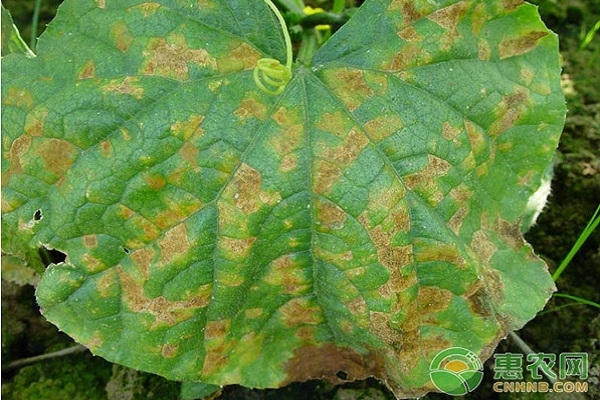
20. Cucumber virus disease
Symptoms:
The leaves are yellow-green interflowered leaves, the diseased leaves are small, shrinking, and the leaves are reversed when severe.
Stem
The internodes are shortened, the stems are deformed, and the leaves of the diseased plants are withered.
Melon
It has dark green and light green color, and the surface is uneven and the melon is deformed.
The new leaves produce yellow spots, which turn yellowish markings later, and the green part is bulged.
The fruit is rich in green spots and raised tumors, mostly deformed melons.
Control agents:
Before the onset to the early stage of the disease, Ningnanmycin, morpholinium hydrochloride, copper acetate, copper sulphate, morpholinium, and bactericidal agents can be selected.
Cucumber pest
21. Huang Shougua
Hazard characteristics:
Adults take the leaves and tender stems of melon seedlings, often causing dead seedlings.
It also harms flowers and young melons, leaving some semi-circular food marks or round holes in the leaves.
The 2nd instar larvae mainly bite the fine roots, and the larvae above 3rd ingesting the main roots cause the whole plant to die, or they can break into the melons and fruits near the ground, causing rot, which seriously affects the yield and quality.
Control agents:
An agent such as fenvalerate, tebufenozide, avermectin, fipronil or profenofos.
22. Yellow Horse
Hazard characteristics:
Most of the adults and nymphs suck the juice of young shoots, young leaves, flowers and young melons.
After the cucumber is killed, the heart leaf can not be normally unfolded or even dried without a top bud, the young or young leaves are shrunk or curled, and the tissue becomes hard and brittle.
The plants grow slowly, the internodes are shortened, and clustering occurs.
After the young melon is damaged, the fruit is hardened and deformed. The hair becomes grayish brown or dark brown, and the growth is slow. The peel is rough and stained, covered with “rust skinâ€, and when it is serious, it causes the melon.
Cucumbers that are damaged by thrips, the leaves are prematurely aged, brittle and curly, and look like cucumber green mottle virus disease.
Control agents:
An agent such as acetamiprid, imidacloprid, avidin, dinotefuran, chlorfenapyr, ethyl spinosyn, pyridinium, imidacloprid, thiamethoxam or the like.
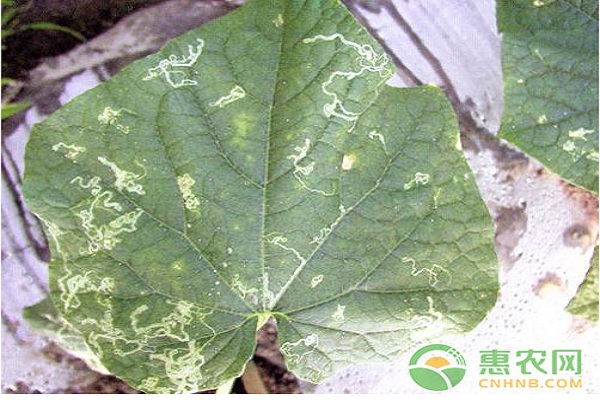
23. Liriomyza sativae
Hazard characteristics
The larvae feed on the epidermis or the mesophyll tissue on the epidermis of the leaves, sucking juice and spawning, and the larvae sneak into the leaves and petiole to produce a white or light gray serpentine stalk with wet black and brown worms, destroying chlorophyll.
As chlorophyll is destroyed, photosynthesis drops sharply and plant growth slows down.
In severe cases, the entire blade is covered with insects, causing the leaves to gradually wither and the plants to die.
Control agents:
Emamectin benzoate + beta-cypermethrin, chlortetracycline, avi. high chloride and other agents.
24. Whitefly
Hazard characteristics
It mainly uses adult nymphs and nymphs to absorb plant juice, which harms the leaves to yellow, and even the whole plant is wilted and dead.
In addition, due to its strong fertility, the breeding speed is fast, and the clusters are harmful.
Therefore, this worm often causes two serious and severely devastating diseases:
First, it will secrete a lot of juice, which will seriously pollute the leaves and fruits, and make the cucumber lose its commerciality.
Second, it will carry a virus, causing a major viral disease.
Control agents:
An agent such as spirotetramat, pyriproxyfen, pymetrozine, clothianidin, buprofezin, imidacloprid, high chloride, buprofezin or the like.
25. Melon
Hazard characteristics:
After the leaves and growth points of the melons are damaged, the leaves are curled up, the growth is stagnant, and even the whole plant is wilted and died.
The leaves of adult plants are damaged, and the leaves are yellow and deciduous in advance, which shortens the period of melons and reduces production.
In addition, it can spread viral diseases.
Control agents:
Bromide cyanide, zhongdingwei, thiamin, high chlorofluoride, chlorocyanide, imidacloprid, imipenem, zhongdingwei, acetamiprid and other agents.
The main content of the above 25 common pests and diseases of cucumber is said to be this. Please refer to the actual situation of the farmers to make reference judgments. More exciting content can continue to pay attention to Hui Nongwang!
Shaanxi Kang New Pharmaceutical co., Ltd. , https://www.bio-pharmacies.com